The upcoming soft opening of Petaluma’s Grand Central Café scheduled for April 3 at 226 Weller Street provides the perfect opportunity to share the history of the building that the café occupies – the former Petaluma and Santa Rosa Railway depot.
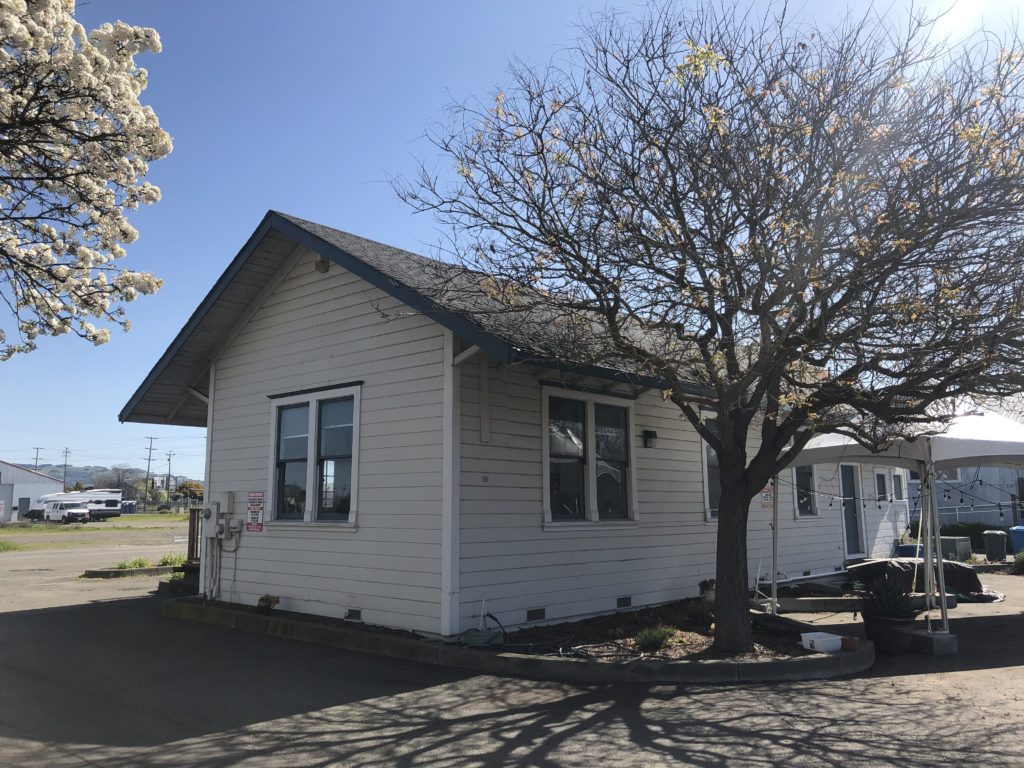
The 1971 widening of East Washington Street to four lanes resulted in the loss of several historic businesses and the buildings they occupied, such as the Tivoli and Yosemite hotels, the Longhorn Saloon, Cavanagh Lumber Company, and Studdert’s Meat Market. However, the former Petaluma and Santa Rosa Railway Company office and ticket depot, a simple one-story wood-frame structure with a gable roof, managed to escape the wrecking ball. This building was originally constructed in 1904 at the southwest corner of Copeland and East Washington Streets. In June of 1971, it was moved to its current location at 226 Weller Street.
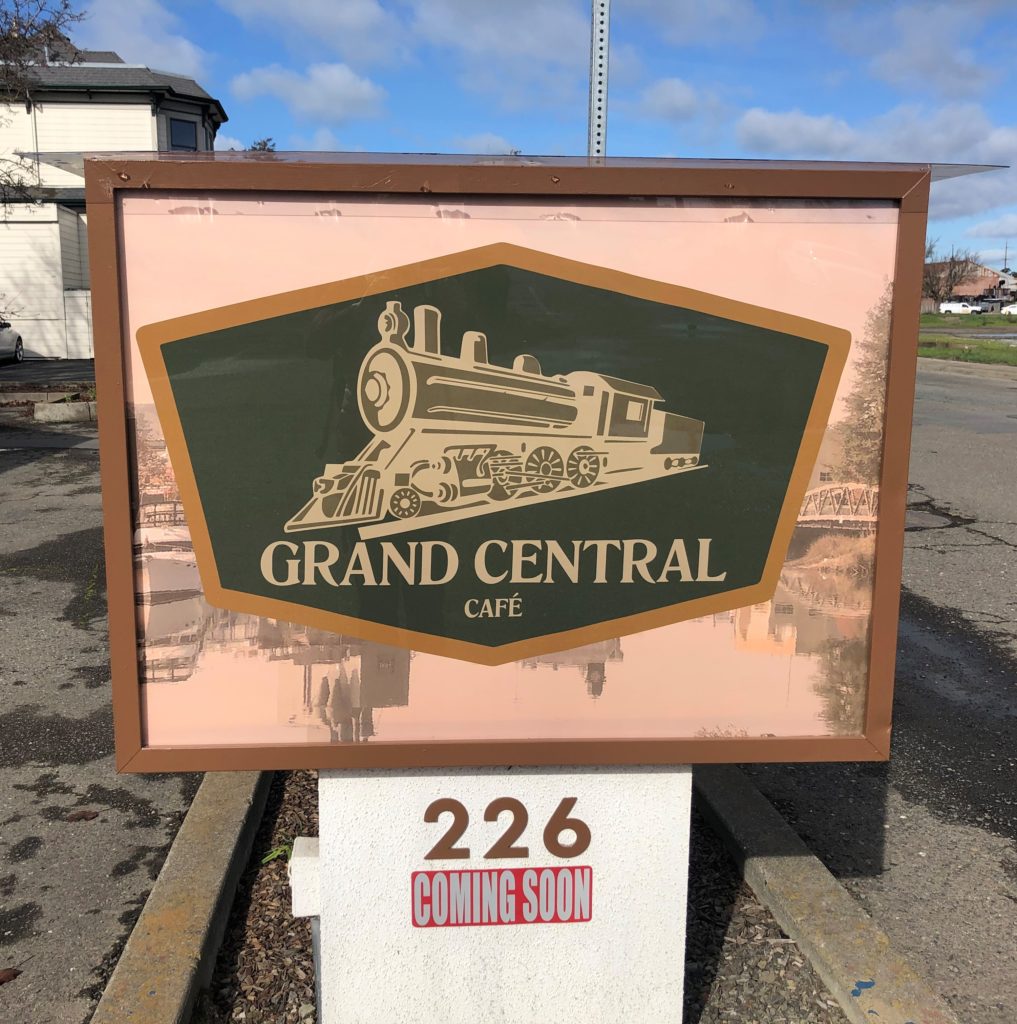
In his 2007 Historic Structures Report for the Petaluma and Santa Rosa Railroad Trestle, architectural historian Seth Bergstein states that the Petaluma & Santa Rosa Railway (P&SR) was incorporated in 1903 as a consolidation of various small horse-drawn and steam powered lines. The railroad’s founders intended to operate an electric freight and passenger line to serve the burgeoning agricultural and commercial needs of the region and provide passenger service to and from San Francisco and the communities of Santa Rosa, Sebastopol, Petaluma, and other Sonoma County locations. The P&SR linked steamer and rail service.
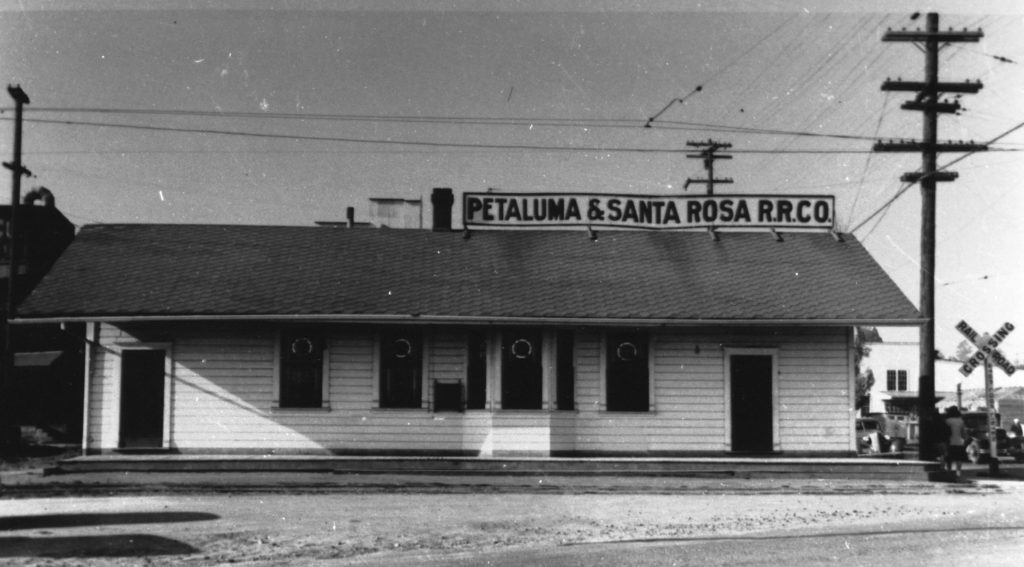
Credit Sonoma County Library.
By July of 1904, the P&SR had begun construction of car barns and a round house on the site of Charles Adamson’s fruit drying operation located on a lot bound by East D, Weller, and Copeland Streets, near the steamer landing.
The first freight shipped over the P&SR Railway occurred on December 20, 1904, when two carloads of hops left Santa Rosa for Petaluma, where it was transferred to a P&SR steamer bound for San Francisco and points beyond.
The first passengers to board the train at the P&SR depot were 65 members of the Woodmen of the World, Petaluma Camp No. 515, and their female companions. On the evening of December 9, 1904, this group traveled by special car over the electric line to visit Rosewood Camp No. 93, Woodmen of the World, of Santa Rosa. The party was met at the Santa Rosa depot by horse drawn busses and driven to the Woodmen’s lodge located on Third Street between Main and B Streets.
Petalumans attending Santa Rosa Junior College, founded in 1918, and Sweet’s Business College caught the train at the P&SR depot on Copeland and Washington Streets. Because the train made several stops, it took an hour and 15 minutes to get to Santa Rosa. The train frequently ran behind schedule, much to the consternation and often joy of the students who referred to it as the “Toonerville Trolley.”
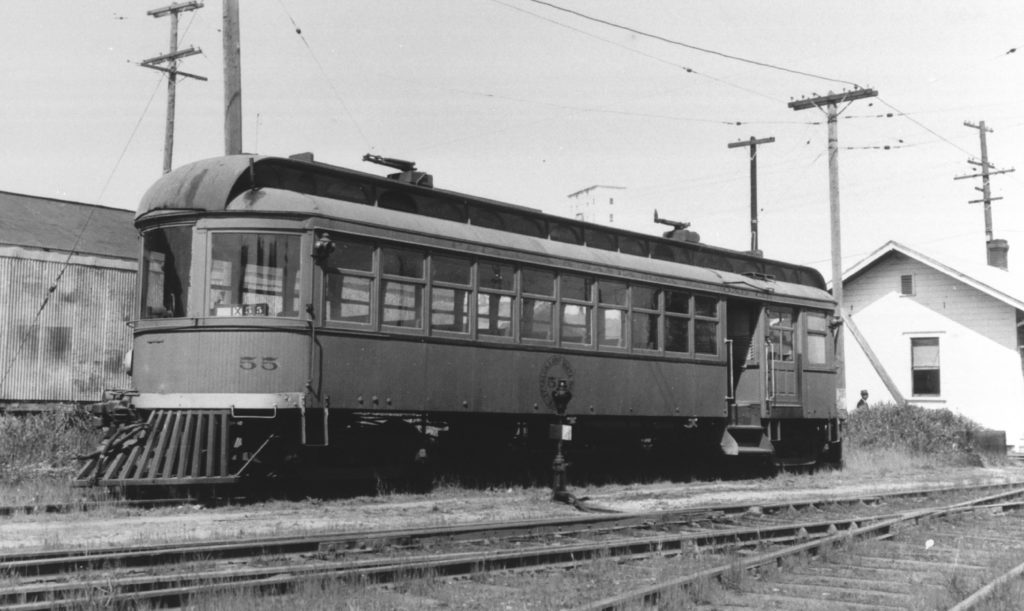
During the 1920s, the automobile changed how people got around, and prosperous farmers began to purchase cars and later trucks for much of their work. They no longer depended on the railroad to get their products to market. Passenger revenues on the P&SR dropped, and by 1925, the P&SR was no longer making a profit. After much legal wrangling, including court battles among rival railroads, the Northwestern Pacific Railroad, owned by the Southern Pacific Railroad Company, purchased the P&SR in 1932, the same year that passenger service stopped.
According to city directories, although no longer serving as a ticket depot, the P&SR continued to use their building at the corner of Copeland and East Washington streets as office space until the 1960s. In 1971, Petaluma finalized its plans to widen East Washington street, and the 22 foot by 35-foot building lay in its path. During the dark of night in early June of that year, Wacker & Sons of Penngrove moved it to its current location on Weller Street for the Santa Rosa Feed Corporation.
This was just a few months before the Santa Rosa Feed Corporation, Vonsen Feed and Milling Company, and Ash Bag Company consolidated to form one corporation known as Bar Ale. The name represented the first letters of the corporation stockholders’ last names: Heimi Ash, Paul A. Lewis, and Ernest Epping, plus the bar from the firm’s cattle brand.
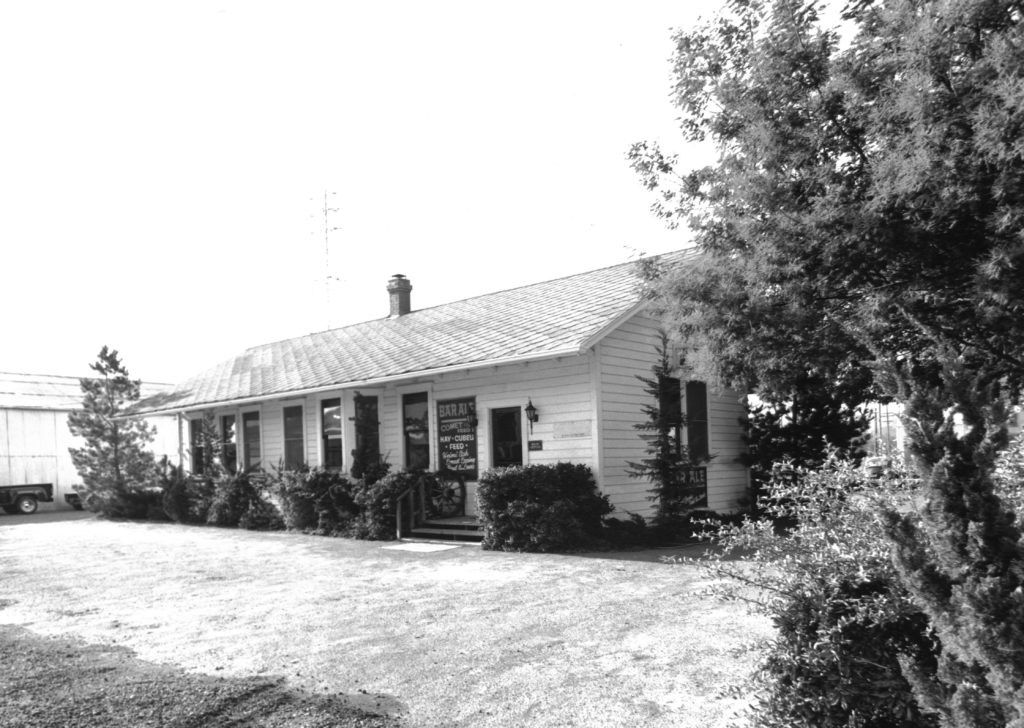
The Weller Street site was chosen because it was owned by Heimi Ash, who operated the Ash Bag Company from the neighboring building at 224 Weller Street.
The Ash Bag Company and later Bar Ale used the building at 226 Weller Street for their offices until the 1990s when it was leased to the operators of the Petaluma Queen. This excursion paddle wheeler ran leisure cruises on the Petaluma River. The building remains in the Ash and Lewis families, currently owned by Donald Benson. Donald is the widower of Tamara Lewis, daughter of Paul and Marlene (Ash) Lewis, and granddaughter of Heimi Ash.
Sources:
- Bergstein, Seth. Petaluma & Santa Rosa Railroad Trestle Petaluma, California Historic Structures Report, prepared for the City of Petaluma, November 30, 2007
- Paul A. Lewis, 1/21/21 phone conversation
- Petaluma Argus, November 7, 1904, page 1: “To Build New Depot.”
- Petaluma Daily Courier, November 28, 1904, page 1: “Will Begin December 1 Official Notice of Starting New Electric Route.”
- Petaluma Argus, December 2, 1904, page 4: “First Trolley Party a Grand Success.”
- Petaluma Argus, December 22, 1904, page 1: “First Freight Shipped Over Electric Road.”
- Petaluma Argus Courier, October 30, 1957, page 16: “Oldtime Petalumans Recall Trolley Fun” by Bill Soberanes
- Petaluma Argus Courier, November 6, 1968 page 15: “Memories of Trolley” by Bill Soberanes.
- Petaluma Argus Courier, June 2, 1971, page 4: “Feed Corp. Building Move Ok’d.”
- Petaluma Argus Courier, August 17, 1971, page 6: “The Year of Changes” by Bill Soberanes
- Petaluma Argus-Courier, November 9, 1971, page 9: “Firms Merge into One Corporation.”
- Petaluma Daily Courier, December 10, 1904, page 2: “Visited Santa Rosa – Petaluma Woodmen have Excursion and Entertainment.”
- Press Democrat, July 30, 1904, page 3: “New Railway Shops Santa Rosa & Petaluma R.R. is to Have New Buildings.”
- Schmale, John and Kristinia. Images of Rail: Petaluma and Santa Rosa Railway. Charleston, South Carolina: Arcadia Publishing, 2009
 Sonoma County Ag and Land Use History Part of Endangered Archival Collection
Sonoma County Ag and Land Use History Part of Endangered Archival Collection
That modest little building has an interesting history – thanks!
Thanks for this interesting article, Katherine. I look forward to having a cuppa joe there this summer. Looking at the area on Google maps, again amazed at the vast undeveloped lot between the depot and downtown. I used to know more about it, but why isn’t it housing by now? Does it flood? Maybe you could point me to a past article or resource for it.
Hi Jay – you’re most welcome. As a matter of fact, there are plans to develop the adjacent lot for housing. I’m not up to speed on the details, but it’s definitely on the books.
Great story Katherine, right around the corner from me. Hearing the story and seeing the building is like time travel! Seems like a lot of buildings got moved around in this town! Speaking of close to me, I would love to know about the original Friedman’s Hardware store that burned down in the 1970’s. Heard a lot that store (i.e. wavy wooden floors, etc). Keep up the good work!
Hi Gordon – Thank you. You’re the second person to ask me about the Friedman Brothers Hardware store that once stood on East Washington Street across from Golden Eagle Shopping Center (I still call it that) in the last two weeks. I’ll have to do a mini-post. Stay tuned!